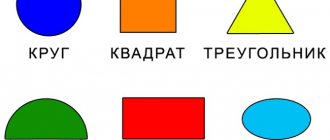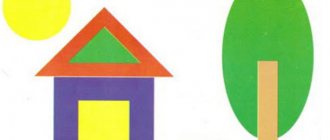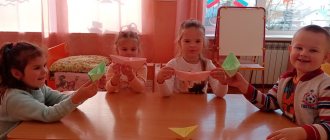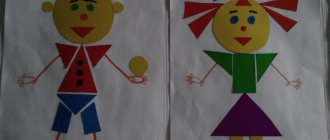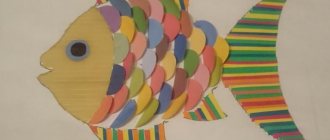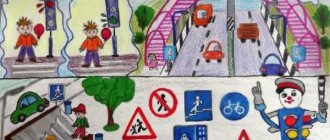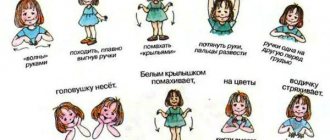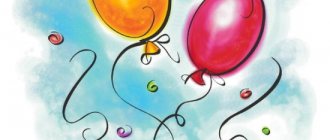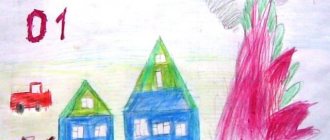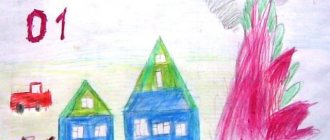Drawing from geometric shapes is a task for preschool and primary school children that allows them to develop spatial imagination, knowledge of geometric shapes and improve motor drawing skills.
For your convenience, we have made coloring pages of geometric shapes that you can print and color (for preschoolers). After each coloring, an example of a drawing on the same topic is presented. Children complete the drawing independently using a ruler and color it with paints or pencils (for schoolchildren). Coloring pages and drawings are made on the following topics:
- "Air Transport"
- "Toys"
- Animals from geometric shapes “Cat and Mouse”
- "Transport"
- "House in the village"
- "Sea and Ship"
- "Railway"
- "Forest New Year's Tale"
- "Summer Glade"
- "Space flight"
Drawings of geometric shapes for children - lesson plan
- Start the lesson by finding out what geometric shapes the child remembers. He must confidently name and see circle (semicircle), oval, square, triangle and polygon . Older children will be able to see the broken line in the drawings.
- Find the geometric shapes in the picture. The more geometric shapes a child finds, the better. You can count them.
- Fill the coloring book with color or draw the selected composition. It is very good if the child goes further and draws his own elements of the picture.
Rectangle
A rectangle is a parallelogram in which all angles are right.
Rectangle properties:
- The diagonals of a rectangle are equal and bisect at the point of intersection.
- Around a rectangle, you can describe a circle with a center at the point of intersection of its diagonals and a radius that is equal to half the diagonal.
find out the area of a rectangle :
- S = a × b, where a, b are the width and height of the rectangle.
- S = a × √(d2 - a2), where a is the known side, d is the diagonal.
A diagonal is a line segment that connects opposite vertices of a figure. It is present in all figures whose number of vertices is more than three. - S = 0.5 × d2 ×
